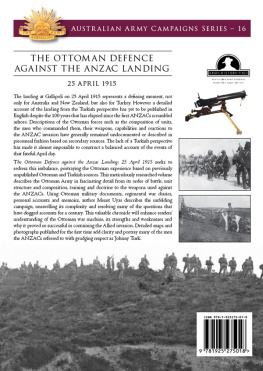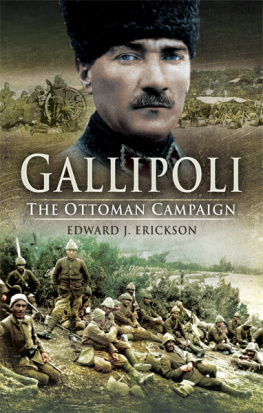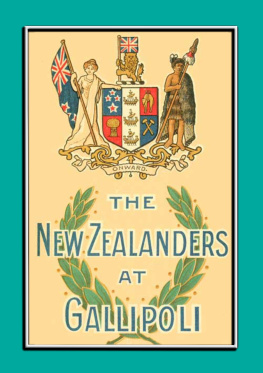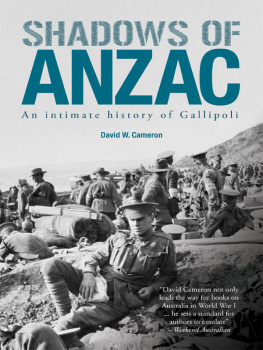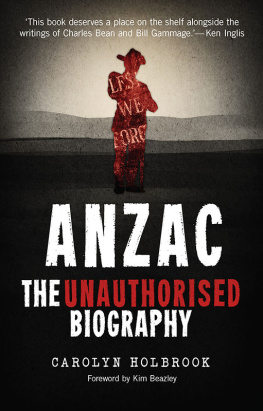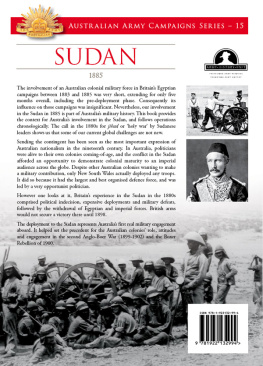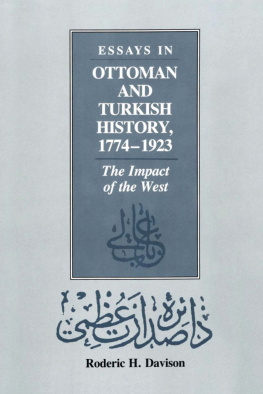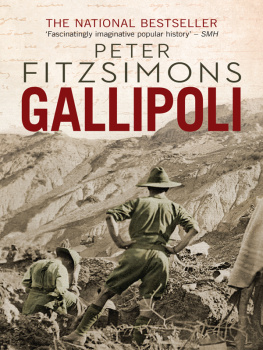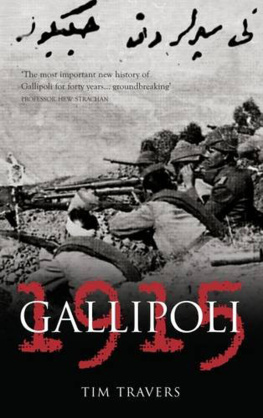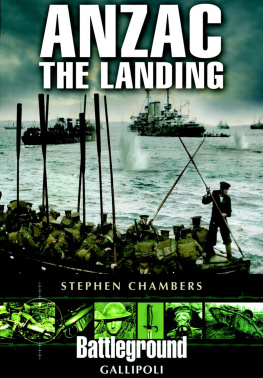
Copyright Army History Unit
Campbell Park Offices (CP2-5-166)
Canberra ACT 2600
AUSTRALIA
(02) 6266 4248
(02) 6266 4044 fax
Copyright 2011 Commonwealth of Australia
First published 2015
This book is copyright. Apart from any fair dealing for the purposes of private study, research, criticism or review as permitted under the Copyright Act, no part may be reproduced, stored in a retrieval system or transmitted in any form or by any means, electronic, mechanical, photocopying, recording or otherwise, without written permission.
See National Library of Australia for Cataloguing-in-Publication entry.
ISBN: 978-1-922132-99-4
Published by Big Sky Publishing, Sydney
Cover and typesetting by Think Productions, Melbourne
Printed in China through Asia Pacific Offset Limited
Front cover and title page: Machine-gun company commander (most probably the officer commanding the 125th Company) pose with a machine-gun crew somewhere near Lone Pine or Johnsons Jolly during the summer of 1915. Source: Authors private collection.
Back cover background: In a staged photo an infantry platoon prepares for an assault. (image courtesy of ATASE)
Back cover top right: Ottoman reinforcements march towards the front line. (image courtesy of Nejat uhadarolu)
Back cover bottom right: A logistic train carrying heavy equipment and tents for a field camp. (image courtesy of Nejat uhadarolu)
To my father the late Sergeant Major Tayyar Uyar, Signal Corps, Turkish Army,
whom I still miss so much.
CONTENTS
In writing this book I have received enormous assistance from many people and organisations to whom I owe a significant debt of gratitude.
I would like to thank Dr Roger Lee and Dr Andrew Richardson of the Australian Army History Unit for offering me the opportunity to write the story of the Ottoman defence against the Anzac landings. Andrew also deserves special mention for his substantial efforts in proofreading the text and correcting my many English mistakes. Without his meticulous and tenacious editing I am afraid the book would be rather dull and also something of a challenge to read.
I have had the good fortune to discuss various aspects of the landing with Brigadier Chris Roberts (retd) who has written his own wonderful book on this topic from the perspective of the Australians and New Zealanders. Chris also provided extremely helpful comments on the final draft.
Nejat uhadarolu of the Hisart Museum and Yetkin en generously allowed me to use valuable photographs from their private collections, while Serdar Ataksor and Hakan Akn kindly provided photographs and maps from their grandfathers personal papers. The late Major Halis Ataksors hand-marked mimeograph maps considerably enriched the book. I am also extremely grateful to Dr Phil Rutherford for his skilfully drawn illustrations.
The Turkish General Staff Military History Directorate (ATASE) Archive is an important resource centre for researching the history of the Ottoman military. I am grateful to Brigadier General Necdet Tuna, Colonel zkan Uluta, Colonel Kemal Ellialtolu, Colonel Suat Akgl (retd) and other ATASE staff for their valuable assistance.
The University of New South Wales, Canberra, provided me with wonderful working conditions and an academically stimulating environment for over two years. I would like to express my gratitude to the Rector, Professor Michael Frater, the ACSACS Director, Professor Tom Frame, and Professor Jeffrey Grey for their collegial friendship and assistance.
I am particularly grateful to Danny Neave from Big Sky Publishing for his patience and skill, particularly given the tight deadline in publishing this book in time for the centenary of the landing at Gallipoli in 2015. I would also like to thank Cathy McCullagh for editing and enriching the text.
Last but not least, I am very grateful for the understanding and support of my wife lkay and my daughter Dilara. They stoically shouldered the burden of an absent husband/father who has spent much time away from his family to complete this book.
Naturally any errors of fact or interpretation are entirely my own responsibility. I note that the help provided by these organisations and individuals does not mean that they will necessarily agree with my conclusions.
Prior to the landing most of the topographical features at Anzac had not been named at least not on military maps. The names that are now so familiar were generally devised during the battles that began on 25 April 1915. In most cases the names of officers, units and others inspired by the bloody nature of the conflict were given to the previously nameless features. Many features particularly hills and other dominating terrain were simply named for their height such as Hill 971 (Kocaimentepe) which is marked in contemporary British maps as some 971 feet high. Geographical terms have also become names, including boyun (literally saddle) where the original command post of the 8/2nd Company was located prior to the landing. Likewise suyata (creek) later designated the location where Mustafa Kemal positioned the 5/3rd Mountain Artillery Battery.
While the issue of naming the topographical features was more or less settled in the initial days following the landing, both sides struggled with the immense difficulty of identifying the myriad features of the rugged, broken landscape. Modern scholars still take time to develop a feel for the terrain and identify the places that saw actions fought or where units were located. It is worth remembering the singular difficulty presented by the topography of the campaign as the actions both prior to and following the Anzac landing are described in this narrative.
As a general rule, well-known English names have been employed throughout the text for the sake of clarity and simplicity, while the modern Turkish names have been provided in parentheses at their first appearance. In some cases, however, where the English spelling is problematic or confusing such as with the towns of Channakkale or Boghali, the modern Turkish spellings have been preferred: anakkale and Bigal respectively.
Likewise, the term Ottoman is preferred to Turk, Turkish or Turkey. Ottoman is a more accurate name for the multi-ethnic, multi-religious and multi-cultural empire that once ruled a vast area well beyond the borders of modern-day Turkey.
With the enduring popularity of the Anzac legend and the build-up to commemorations for the centenary of the Gallipoli campaign, the publication of ever-increasing numbers of new books on various aspects of the campaign continues unabated in both Australia and Turkey. There is also a burgeoning interest on both sides in understanding the campaign from the other side of the hill. This curiosity to learn more about the opposing side is stronger in Australia than in Turkey. However stereotypes, common mistakes and the remnants of wartime propaganda continue to obscure the true picture of the Ottoman Army. Irrespective of a books aim, most readers are left with an image of a faceless army punctuated by the haunting visages of a few faded black and white photographs. Surprisingly, Turkish historiography contains little description of the respective unit commanders, officers and soldiers who shouldered the burden of war, with the important exception of the remarkable Mustafa Kemal Atatrk. Previous generations of Turkish historians preferred to look at the Gallipoli battles in a collective way and paid little attention to the contributions of individuals or to their perspectives on the conflict. Even in the highly detailed volumes of the Turkish Official Military History
Next page
